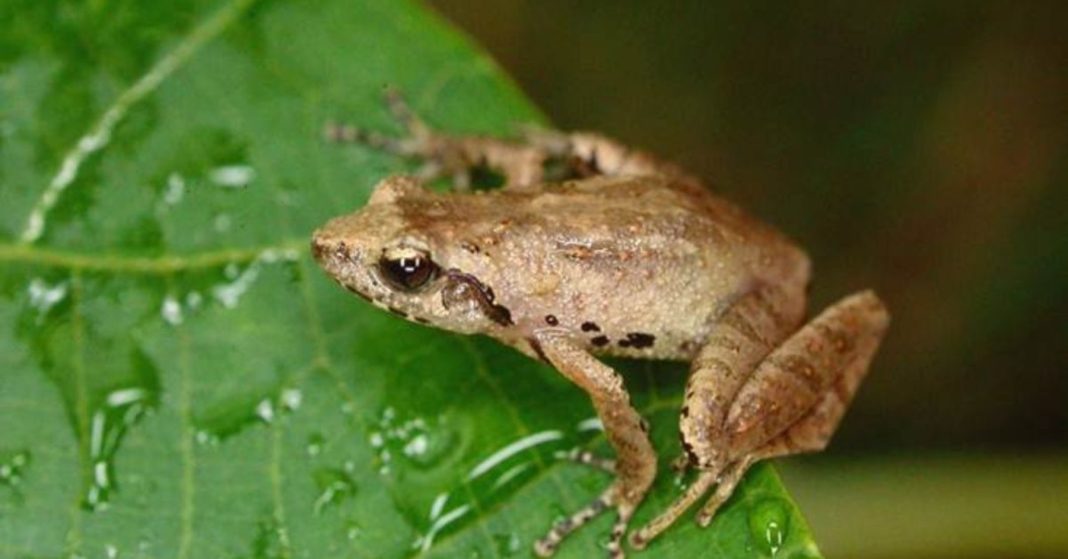The discovery of a new bush frog in Meghalaya is a remarkable moment for both scientists and nature lovers. This tiny amphibian not only enriches India’s biodiversity but also highlights the hidden wonders of our natural world. Meghalaya, often called the “Abode of Clouds,” has once again proved why it is one of the richest biodiversity hotspots in the country. Let us explore in detail the features, importance, threats, and conservation of this newly discovered bush frog.
Introduction to the New Bush Frog in Meghalaya
A bush frog is a type of small frog that prefers to live in bushes, shrubs, and trees instead of large water bodies like ponds or lakes. The new bush frog in Meghalaya was recently discovered by a team of researchers who were studying amphibians in the dense forests of the state. This discovery adds another precious gem to the treasure chest of wildlife in India.
Unlike many common frogs, this species has unique physical and behavioral characteristics, making it an exciting find for herpetologists (scientists who study amphibians and reptiles).
Why Meghalaya is the Perfect Home for the New Bush Frog
The new bush frog in Meghalaya was found in one of the most suitable environments for amphibians. Meghalaya’s geography and climate make it a paradise for frogs.
- High Rainfall: The state receives some of the heaviest rainfall in the world, especially in Cherrapunji and Mawsynram. This creates moist conditions, which are perfect for bush frogs.
- Thick Green Forests: Meghalaya is covered with subtropical forests and sacred groves, providing shelter, food, and breeding grounds for frogs.
- Varied Habitats: From hills and plateaus to rivers, caves, and waterfalls, the state offers a variety of micro-habitats.
- Biodiversity Hotspot: Meghalaya is part of the Indo-Burma Biodiversity Hotspot, which means it has a high number of unique species found nowhere else in the world.
These conditions together explain why the new bush frog in Meghalaya could survive and remain hidden until now.
Unique Features of the New Bush Frog in Meghalaya
Scientists studying the new bush frog in Meghalaya have pointed out some distinct features that make it special:
- Small Body Size: The frog is tiny, which helps it stay hidden among leaves and branches.
- Camouflage Coloring: Its skin color blends with green leaves and brown branches, making it difficult for predators to spot.
- Distinct Croaking Sound: The male frog produces a unique croak, which helps researchers identify it and attract females during mating season.
- Arboreal Lifestyle: Instead of living on the ground or in ponds, it prefers climbing and living in bushes and small plants.
- Insect Diet: It feeds on small insects like mosquitoes, flies, and beetles, playing a key role in controlling insect populations.
Importance of the New Bush Frog in Meghalaya
The discovery of the new bush frog in Meghalaya is highly significant. Let’s understand why:
Adds to India’s Rich Biodiversity
India is already home to hundreds of frog species. With the addition of this new bush frog in Meghalaya, the country’s biodiversity becomes even more diverse and valuable.
Scientific Breakthrough
Every new species discovered gives scientists a chance to learn more about evolution, adaptation, and the effects of climate change on wildlife.
Natural Pest Control
The new bush frog in Meghalaya eats mosquitoes and other insects, which helps reduce diseases like malaria and dengue.
Environmental Health Indicator
Frogs are sensitive to pollution, temperature changes, and water quality. Their healthy presence means the environment is clean and balanced.
Cultural and Educational Value
Such discoveries spark curiosity and interest among students, researchers, and locals, making people more aware of the need to protect nature.
Threats Facing the New Bush Frog in Meghalaya
Although the new bush frog in Meghalaya is a great discovery, it is also highly vulnerable to threats.
- Deforestation: Cutting down trees for farming, roads, or urbanization destroys its natural home.
- Pollution: Chemicals from pesticides and plastic waste pollute the clean water sources where frogs breed.
- Climate Change: Irregular rainfall, rising temperatures, and habitat changes affect frog populations severely.
- Habitat Fragmentation: Construction and mining activities break forests into smaller parts, making it hard for frogs to survive.
- Hunting and Neglect: Though small, frogs are often ignored in conservation efforts compared to larger animals like tigers or elephants.
How to Protect the New Bush Frog in Meghalaya
The survival of the new bush frog in Meghalaya depends on human efforts. Here’s how we can help:
- Protect Forests and Sacred Groves: Avoid unnecessary deforestation and respect local community-protected forests.
- Reduce Pollution: Use fewer plastics, stop dumping waste in rivers and forests, and encourage eco-friendly farming.
- Awareness Campaigns: Teach people, especially students, about the importance of frogs and biodiversity.
- Support Conservation Projects: Government and non-government organizations working in Meghalaya need public support.
- Eco-Tourism: Promote responsible tourism that encourages conservation while giving locals an income.
Conclusion
The discovery of the new bush frog in Meghalaya is more than just finding a tiny amphibian. It is proof that our Earth still hides countless secrets waiting to be discovered. This frog may be small, but its role in balancing nature is very big. Protecting it means protecting Meghalaya’s forests, rivers, and climate.
If we take small steps today to save this frog, we ensure a healthier tomorrow for both humans and wildlife.




